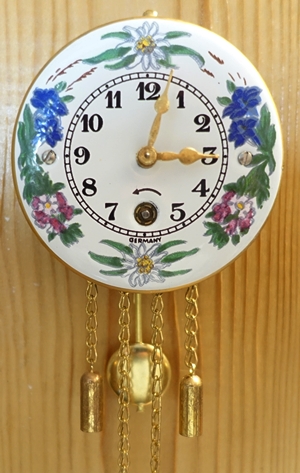Wall clocks are not normally my thing. But the ones shown here are so small and cute that it’s worth taking a closer look at them. These are miniature clocks from the manufacturer Wintermantel in Triberg in the Black Forest, Germany.

Uhrwerke – Eine Leidenschaft
Wall clocks are not normally my thing. But the ones shown here are so small and cute that it’s worth taking a closer look at them. These are miniature clocks from the manufacturer Wintermantel in Triberg in the Black Forest, Germany.

Malleray Watch Co. is a largely unknown manufacturer of watch movements. Reason enough to compile what is known about the history and movements of this company.

The automatic movements of the 220 caliber family from the German manufacturer Bernhard Förster were very successful in the 1970s. Here we take a look at a few particular features of these movements.

In modern wristwatch movements, such as the ETA 2824-2, the stop-seconds function, also called hacking seconds, is largely standard. This means that when setting the hands, the second hand is stopped in order to set the watch as accurately as possible to the second. Here I present two pocket watches from the period between 1930 and 1940 that also have this complication.

Regulator dials stand out at first glance. Where there are usually at least two hands turning in the center of the dial, namely those for the hours and minutes, there is only one hand, the one for the minutes. The hour hand, like the second hand, is a small hand above or below the center. What is this good for and where does it come from?

The first part of this article about the Pforzheim-based company Kasper & Co. was about its history: Kasper: Watches and Movements – Part 1
In this second part, we take a look at the company’s watch movements.
